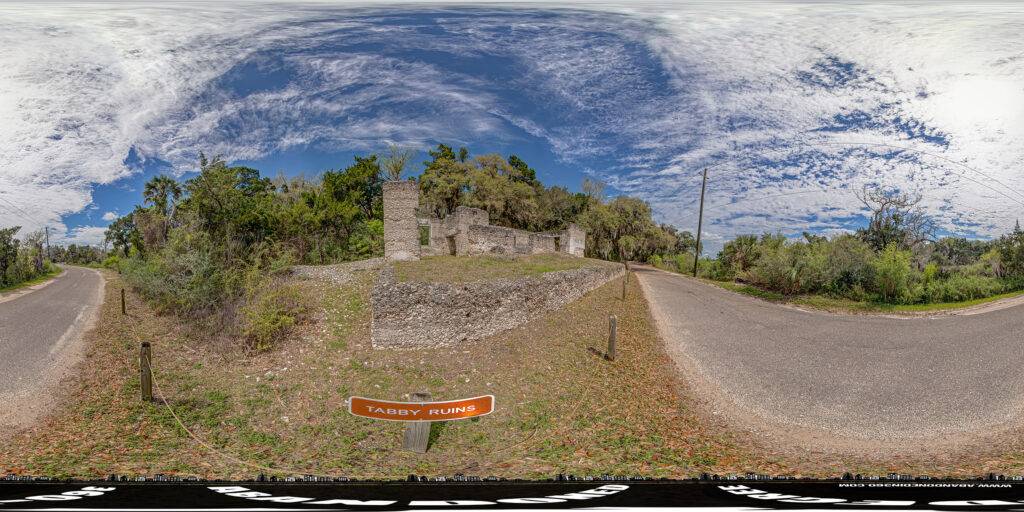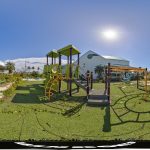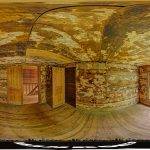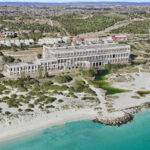Thomson Tabby House
Take a 360-degree panoramic view of the Thomson Tabby House ruins that is located on Fort George Island in Jacksonville, Florida. There are two 360-degree panoramic images in the virtual tour below, be sure to view both images for best experience. Do you like urban exploring? Here is a map with tons of GPS locations for you to get out and explore.
Click here to view it in fullscreen.
About the ruins
Located on Fort George Island in Jacksonville, Florida, the Thomson Tabby House ruins are the remains of a house built by Charles Thomson in 1854. In 1855 when Mr. Thomson died, the construction was halted and the house was ultimately never completed. Tabby is a manmade coquina, often called coastal concrete and was a common building material of the time. It is composed of burned oyster shells that are mixed with lime, sand, water, ash and a variety of other shells.
The house measures roughly 46 feet by 20 feet. It looks like the house was to have two room with a fireplace. There was room on the tabby foundation to include a porch as well. The home is said to have been for Thomson’s daughters and her husband.
The ruins are open to the public and visible from the street. If you find historic ruins like this interesting, you might like to view the Cruger-dePeyster Plantation Sugar Mill Ruins that are located in New Smyrna Beach, Florida or even the Dummitt Plantation Mill Ruins in Ormand Beach, Florida. You can also check out our top abandoned places in Florida page.
Here is an 8K 360VR video of the ruins.

Equirectangular panoramic view of the Thomson Tabby House ruins on Fort George Island in Jacksonville, Florida.
You can find the ruins here on Google Maps. View more ruins in 360-degree virtual tours on our website.
Do you have 360-degree panoramic images captured in an abandoned location? Send your images to Abandonedin360@gmail.com. If you choose to go out and do some urban exploring in your town, here are some safety tips before you head out on your Urbex adventure.
Equipment used to capture the 360-degree panoramic images:
- Canon DSLR camera
- Canon 8-15mm fisheye
- Manfrotto tripod
- Custom rotating tripod head
If you want to start shooting 360-degree panoramic images, you might want to look onto one-click 360-degree action cameras.
Click on a state below and explore the top abandoned places for urban exploring in that state.







4 Comments
[…] Plantation Sugar Mill Ruins that are located in New Smyrna Beach, Florida or even the Thomson Tabby House ruins in Jacksonville, […]
[…] There used to be more abandoned buildings in the Tosohatchee Wildlife Management Area but they have either been burned in wildfires or demolished. You can still find old cattle vats and remnants of the old railroad system out here. Similarly, if you look in the right areas of the WMA, you can even find a few Indian mounds. If you find ruins like this interesting, you might be interested in viewing the virtual tours for the Bulow Plantation Ruins, Dummitt Plantation Ruins, or the Thomson Tabby House ruins. […]
[…] from the Kingsley Plantation. Also located down the street and also on Fort George Island is the Thomson Tabby House. You might also fine the Huston House at Butler Plantation […]
[…] are a few other abandoned locations you might find interesting, house in Crawfordville, Thomson Tabby House, or the Kingsley […]